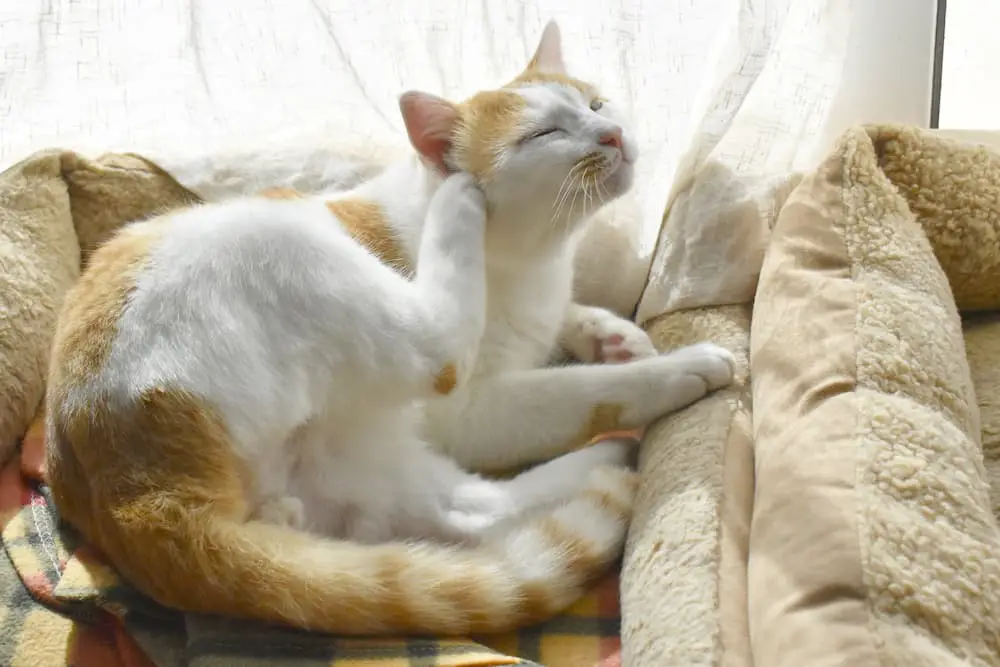 I have heard many excuses in my practice for not spaying/neutering pets. Then, there is a whole new list of thoughts for spaying/neutering at an early age. Veterinarians also have debated the idea of early spay/neuter practices for some time, and there is a variable of opinions in the community. I hope to answer many questions, and debunk any false ideas about the spay/neuter process in our young cats.
I have heard many excuses in my practice for not spaying/neutering pets. Then, there is a whole new list of thoughts for spaying/neutering at an early age. Veterinarians also have debated the idea of early spay/neuter practices for some time, and there is a variable of opinions in the community. I hope to answer many questions, and debunk any false ideas about the spay/neuter process in our young cats.
Many researchers, breeders, and veterinarians debate whether pets should be sterilized at
an early age (before puberty), late age (after puberty or older), or not at all. There are many ideas that are in the animal community that are based on old research. There are many ideas that have no scientific backing, but there are some ideas that have research behind the thought. Recently, UC Davis published an article that related early age sterilization with many diseases and disorders in dogs. These problems were studied in large dogs and included many types of cancers and ligament failures. The study also stated that many of these problems arise in any sterilized large dog, not just the early age sterilization. The same university strongly recommends that spaying/neutering your cat is “one of the greatest gifts you can provide your pet and family”. There are also reports of a study that in male large breed dogs, early neutering can change the growth of the bones of the pet. The study was done in 1995, and I have not seen a similar study since. However, the AVMA published a study where shelter dogs were monitored in 2007. The dogs that were early age sterilized did not differ any than late or not sterilized. At this time, I know of no research publication that states there are any problems with early age sterilization in cats.
There are many national veterinary organizations the support and encourage early age sterilization in cats. The American Veterinary Medical Association, American Association of Feline Practitioners, American Animal Hospital Association, many Humane society and rescue groups, and many if not all of the veterinary teaching hospitals in America recommend early age sterilization of cats.
Here is a website that has a longer list: https://pets.webmd. com/cats/guide/spaying-or-neutering-your-cat-faq.
Some even suggest that the surgeries are done as early as six weeks. Many veterinarians recommend the cats be a little older, but this is due to anesthetic risks associated with small animals. It is also the comfort level of the veterinarian for surgery in such a small pet.
With the correct anesthesia, temperature control, and surgical instruments, six week old kittens can be safely sterilized without complications. I have done our shelter kittens at six weeks of age with no problems. I have also performed orthopedic surgery on a five week old kitten with an injury that recovered very well and went on to live a normal life with the repair. It is simply up to the veterinarian doing the surgery. I normally recommend a spay or neuter to be done on a 3-5 month old kitten that is at least 1.5 lbs, but that is my personal safety buffer. Many veterinarians are doing the surgeries about the same time as my recommendations.
There are many benefits from early sterilization in cats. The first, and often the most important to pet owners, is it prevents many behavior problems. The urge to mark territory by spraying is reduced or even eliminated in cats if they are sterilized before puberty. A cat can show signs of puberty as young as 5 months (females can go into heat, and males can show an interest in the female “smell”). Aggression is also reduced in cats that do not undergo hormone changes. Second, many hormone related diseases are reduced by early sterilization. Mammary cancers in females and prostate cancers and enlargements are reduced by pre puberty sterilization. Third, the surgical procedure is less traumatic and easier to perform in early age sterilization. When cats get older, the nerve and blood vessels are more developed, which can cause more complications and pain during and after surgery. The early age sterilization pets recover very quickly. Finally, early sterilization prevents hormone influences from occurring. These influences can cause cats to run away to “scout” for a mate.
 The cats tend to dash toward an open door or window. Once outside, they will look for
The cats tend to dash toward an open door or window. Once outside, they will look for
a breeding opportunity that can expose them to many diseases (FIV, Leukemia, Upper Respiratory Disease complex, and parasites). If breeding occurs, then there could be unwanted kittens that will add to the growing stray problem that is worldwide.
Some people will talk about all the negative aspects of early spaying or neutering. In the past, some papers were published that stated the negative effects in cats. This is older research, and newer research debunks the myths of these negative effects. I will try to explain the negativities in the following paragraphs:
My cat will get fat if it is spayed or neutered.
Many intact cats are controlled by their hormones. As a result, much of their time, whether they are indoors or not, is occupied by looking for a mate. The time spent in search of love can reduce time spent eating. Therefore, many breeding animals will appear to gain weight less or slower than the sterilized counterparts. I have had some very overweight breeding animals in my clinic. And a cat that is spayed or neutered will become bored and spend more time at the food bowl. Any cat that spends time doing nothing but eating will gain weight. A comparison would be a sterilized outdoor cat. Most of them, if fed the correct amount of food, will be at a normal weight because they still spend time hunting for food. Controlling the food intake and creating exercise opportunities for your Sphynx will keep them at a normal weight regardless of their sterilization status.
My male cat will get plugged with a stone if neutered too early.
The research is that if a cat does develop a urinary blockage, it has many causes. The early age neuter seems not to be an important factor. The urinary tract problems in male cats have nutritional, genetic, and/or environmental factors. In fact, I have had two intact breeding male cats become plugged in the last year and only one neutered male cat.
My female cat will be a better pet if she can have a litter of kittens.
There is no proof to this statement. Having a litter of kittens simply produces more kittens that may be unwanted. I have always said that every pet should be spayed or neutered unless it can better the breed. And if that pet can better the breed, it should only be used in a breeding program by an experienced breeder. I spay and neuter pets for the shelter that are purebred cats coming from breeders that do not know what to do as breeders. They produce kittens that have poor immune systems or not the standard for the breed and then are unable to place the kittens. Therefore, they end up at the shelter like any other unwanted cat. Waiting for a female to have a litter to help that cat be a better pet is not only false, but very risky for the mother and the kittens.
I hope this article helps everyone understand not only the importance of spaying/neutering cats, but also the importance of doing them early. Veterinarians have had and will always have a varying degree of opinions about this subject. Once the research on this topic is known, then it is clear to see the benefits of early sterilization far outweigh the risks that are involved.







